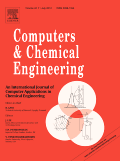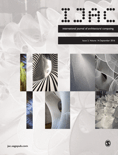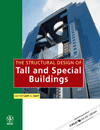
Journal of Computational Design and Engineering
Scope & Guideline
Elevating Engineering Standards with Cutting-edge Research
Introduction
Aims and Scopes
- Computational Optimization Techniques:
The journal extensively covers the development and application of various computational optimization techniques, including metaheuristic algorithms, reinforcement learning, and deep learning approaches tailored for solving complex engineering problems. - Generative Design and AI Integration:
A significant focus is placed on generative design methodologies, particularly those leveraging artificial intelligence and machine learning to enhance design processes and outcomes in engineering. - Fluid Dynamics and Thermodynamics Modeling:
Research often involves computational investigations of fluid dynamics and thermodynamics, particularly in the context of nanofluids and heat transfer optimization in engineering systems. - Architectural and Structural Design Automation:
The journal publishes work on automating design processes in architecture and structural engineering, utilizing advanced computational tools for efficient decision-making and design quality improvement. - Robotics and Automation in Engineering:
Another core area is the application of computational methods in robotics and automation, focusing on path planning, control systems, and the integration of AI in robotic systems. - Interdisciplinary Applications:
The journal emphasizes interdisciplinary applications of computational design, showcasing research that bridges engineering with fields such as healthcare, environmental science, and materials engineering.
Trending and Emerging
- Artificial Intelligence and Machine Learning in Engineering Design:
There is a growing emphasis on the application of AI and machine learning techniques across various engineering domains, enhancing predictive capabilities and design optimization. - Sustainable and Green Engineering Practices:
Research focusing on sustainable engineering practices, including energy-efficient designs and environmentally friendly materials, is on the rise, reflecting global trends towards sustainability. - Integration of Digital Twins in Engineering:
The concept of digital twins is gaining traction, with increased publications on their application in real-time monitoring and optimization of engineering systems. - Advanced Materials and Additive Manufacturing:
Emerging themes include research on advanced materials and their integration with additive manufacturing techniques, highlighting innovations in design and production. - Robotics and Autonomous Systems:
There is a marked increase in studies related to robotics, particularly in areas such as autonomous navigation, robotic design optimization, and human-robot interaction. - Data-Driven Approaches in Engineering:
The journal is seeing a rise in data-driven methodologies, leveraging big data analytics and IoT for enhanced decision-making and predictive maintenance in engineering applications.
Declining or Waning
- Traditional CAD Techniques:
There has been a noticeable decline in publications focused on traditional computer-aided design (CAD) techniques as the field shifts towards more integrated and automated design methodologies. - Basic Optimization Algorithms:
Research centered on basic or single-strategy optimization algorithms is becoming less frequent, as more complex and hybrid approaches that combine multiple strategies gain traction. - Static Structural Analysis:
The focus on static structural analysis alone is diminishing, with a greater emphasis now placed on dynamic and real-time analysis methods in engineering design. - Conventional Manufacturing Processes:
Papers that solely address conventional manufacturing processes without integrating modern computational techniques or innovations are becoming less common. - General Surveys and Reviews:
There appears to be a reduction in general survey papers that do not offer new insights or methodologies, as the journal increasingly favors original research contributions that provide novel solutions or frameworks.
Similar Journals

COMPUTERS & CHEMICAL ENGINEERING
Exploring the Synergy Between Chemistry and ComputingComputers & Chemical Engineering, published by Pergamon-Elsevier Science Ltd, stands at the forefront of research at the intersection of chemical engineering and computer science. With an ISSN of 0098-1354 and an E-ISSN of 1873-4375, this esteemed journal has been a vital resource since its inception in 1977, with coverage extending to 2025. It is categorized as Q1 in Chemical Engineering (miscellaneous) and Q2 in Computer Science Applications for 2023, highlighting its significant impact within these fields. Notably, the journal boasts impressive Scopus ranks, placing it in the 84th and 82nd percentiles for Chemical Engineering and Computer Science Applications, respectively. A treasure trove for researchers, professionals, and students alike, Computers & Chemical Engineering focuses on the latest trends and innovations in computational techniques, algorithm development, and their applications to chemical processes, ensuring an avenue for groundbreaking findings and collaborative dialogues. While not an open-access publication, it remains a critical reference point for those seeking robust, peer-reviewed research in the rapidly evolving landscape of chemical engineering and computational methods.

International Journal of Architectural Computing
Elevating Architectural Discourse through Computational Excellence.International Journal of Architectural Computing, published by SAGE Publications Ltd, serves as a vital platform for researchers, professionals, and students engaged in the intricate intersections of architecture, computing, and design. With an ISSN of 1478-0771 and an E-ISSN of 2048-3988, this esteemed journal has maintained a commendable standing in the academic community, reflected in its categorization within the top Quartiles (Q2) for both Building and Construction and Computer Graphics and Computer-Aided Design in 2023. The journal operates out of the United Kingdom and showcases innovative research that revolutionizes architectural practices through computational advancements, contributing meaningfully to global discourse. While the journal does not currently follow an Open Access model, it continues to uphold high academic standards, as indicated by its Scopus rankings, including a notable rank of #93 out of 223 in Engineering - Building and Construction. The journal encompasses a wide range of topics, inviting submissions that address contemporary challenges and methodologies in architectural computing, making it essential reading for those passionate about bridging the gap between design and technology.

International Journal of Interactive Design and Manufacturing - IJIDeM
Elevating Standards in Design and SimulationInternational Journal of Interactive Design and Manufacturing (IJIDeM), an esteemed publication by SPRINGER HEIDELBERG, has carved a niche in the domains of Industrial and Manufacturing Engineering and Modeling and Simulation. Established in 2008, this journal serves as a critical platform for disseminating cutting-edge research and practical advancements related to interactive design and innovative manufacturing processes. With an impact factor that places it within the Q2 and Q3 quartiles of respective categories, and Scopus rankings affirming its relevance, IJIDeM invites contributions that explore the crossroads of design, technology, and engineering. Researchers, professionals, and students alike will find valuable insights and collaborations through its pages, making it a vital resource for anyone seeking to enhance their understanding of interactive design principles in manufacturing contexts.

Multiscale and Multidisciplinary Modeling Experiments and Design
Transforming complex challenges into collaborative breakthroughs.Multiscale and Multidisciplinary Modeling Experiments and Design is a dynamic journal published by SPRINGERNATURE, dedicated to advancing the fields of applied mathematics, materials science, and mechanics of materials. With an ISSN of 2520-8160 and an E-ISSN of 2520-8179, this journal provides a platform for innovative research and multidisciplinary approaches that address complex modeling and experimental challenges from 2018 to 2024. Ranked in the Q3 quartile across its categories and holding respectable positions within Scopus rankings, it serves as a vital resource for researchers and professionals seeking to explore emerging techniques and solutions in their fields. Despite its recent inception, Multiscale and Multidisciplinary Modeling Experiments and Design fosters a collaborative environment for knowledge exchange, making it essential for anyone at the forefront of scientific discovery. Open access availability ensures that the groundbreaking research published within is accessible to a broad audience, promoting global collaboration and innovations.

STRUCTURAL DESIGN OF TALL AND SPECIAL BUILDINGS
Shaping the Skyline with Cutting-Edge Insights.STRUCTURAL DESIGN OF TALL AND SPECIAL BUILDINGS is a prestigious journal published by Wiley that focuses on cutting-edge research and advancements in the field of structural engineering, particularly emphasizing tall and special structures. Since its inception in 2003, the journal has become an invaluable resource for academics and practitioners, showcasing innovative design methodologies, case studies, and theoretical contributions. With an ISSN of 1541-7794 and E-ISSN of 1541-7808, this esteemed publication holds impressive Scopus rankings, including Q1 in Architecture, making it a go-to source for the latest developments in engineering related to tall buildings and complex structures. The journal is known not only for its rigorous peer-reviewed articles but also for fostering a collaborative environment among professionals and researchers worldwide. Although it is not an open-access journal, readers from various disciplines, such as architecture, civil and structural engineering, and building construction, will find compelling insights that drive the industry forward. For those committed to excellence in structural design, STRUCTURAL DESIGN OF TALL AND SPECIAL BUILDINGS remains at the forefront of innovation and knowledge dissemination.

Engineering Letters
Advancing Engineering Knowledge Through Innovative ResearchEngineering Letters, published by NEWSWOOD LTD, is a prominent journal in the field of engineering, focusing on innovative research and interdisciplinary studies that reflect the current trends and applications in the engineering landscape. With an ISSN of 1816-093X and an E-ISSN of 1816-0948, this open-access journal strives to provide a platform for researchers, professionals, and students to disseminate insights and findings that contribute to engineering knowledge. Based in Hong Kong, Engineering Letters has maintained a respectable standing with a 2023 Q3 quartile ranking in the miscellaneous category of engineering and ranks #142 out of 307 in general engineering according to Scopus, signifying its influence with a 53rd percentile ranking. The journal’s convergence years, spanning from 2009 to 2024, encapsulate an evolving landscape of engineering discussions and innovations, aimed at fostering collaborations and inspiring the next generation of engineers.

Engineering Journal-Thailand
Bridging local insights with global engineering innovation.Engineering Journal-Thailand, published by Chulalongkorn University, Faculty of Engineering, is a prominent academic journal dedicated to advancing knowledge and research in the diverse field of engineering. With an ISSN of 0125-8281 and an unwavering commitment to quality, the journal has established a substantial presence in the academic community since its inception in 2009. As of 2023, it is ranked in the Q3 category for Engineering (miscellaneous) and has achieved a Scopus rank of 137 out of 307, placing it in the 55th percentile of general engineering journals. Although it operates without open access, its impact within the engineering domain is significant, providing a vital platform for researchers, professionals, and students to disseminate their findings and engage with contemporary engineering challenges. The journal serves as a vital resource for those seeking to stay at the forefront of engineering innovation and contributes to the global discourse by bridging local insights with international perspectives.

STROJNISKI VESTNIK-JOURNAL OF MECHANICAL ENGINEERING
Fostering Innovation Through Rigorous ResearchSTROJNISKI VESTNIK-JOURNAL OF MECHANICAL ENGINEERING is a prestigious publication that has been disseminating cutting-edge research in the field of mechanical engineering since 1974. Published by the Association of Mechanical Engineers Technicians Slovenia, this journal serves as a critical platform for professionals, researchers, and students aiming to explore advancements in mechanical engineering and mechanics of materials. With a category ranking in the Q3 quartile for both Mechanical Engineering and Mechanics of Materials, the journal reflects a robust engagement with contemporary research and practices, contributing to the ongoing discourse within these vital disciplines. Although currently not open access, the journal is committed to providing high-quality, peer-reviewed articles that facilitate knowledge sharing and innovation. It is indexed in Scopus, maintaining respectable standings within its categories, thereby underlining its importance and impact in the global academic community.

STRUCTURAL AND MULTIDISCIPLINARY OPTIMIZATION
Leading the Charge in Structural and Software InnovationSTRUCTURAL AND MULTIDISCIPLINARY OPTIMIZATION, published by Springer, stands at the forefront of research in the fields of computer graphics, computer-aided design, control and optimization, and software engineering. With an impressive Impact Factor, it maintains a notable position within Q1 quartiles across various categories, highlighting its esteemed contribution to academia and industry, and further exemplified by its robust Scopus rankings. The journal provides an Open Access option, facilitating wider dissemination of critical research findings to promote collaborative development across disciplines. Based in Germany, this journal serves as a crucial platform for researchers, professionals, and students, engaging them in high-quality discussions and innovative solutions that push the boundaries of structural optimization. Covering a broad scope of topics, it invites submissions that not only advance theoretical frameworks but also align with practical applications, making it an essential resource for anyone looking to impact the evolving landscape of engineering and technology.

International Journal of Turbomachinery Propulsion and Power
Leading the charge in turbomachinery research and development.The International Journal of Turbomachinery Propulsion and Power, published by MDPI, is a pivotal scholarly platform devoted to advancing the field of turbomachinery, propulsion technology, and power systems. Since its inception in 2016, this open-access journal has provided an invaluable resource for researchers, professionals, and students within the realms of Aerospace Engineering, Energy Engineering, and Mechanical Engineering. With its current ranking in the Q3 category across these disciplines and its strategic placement in Scopus, the journal facilitates the dissemination of cutting-edge research findings and innovative solutions. The commitment to open access, effective from 2017, ensures that high-quality research is readily accessible, fostering collaboration and knowledge sharing in the global academic community. As it continues to expand its scope through 2024, the journal remains a crucial avenue for discussion, experimentation, and advancement in turbomachinery and energy-related studies.